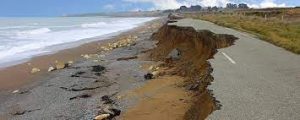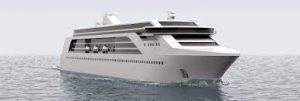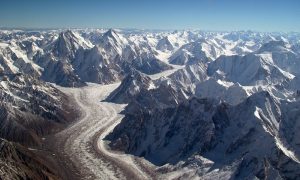Today Current Affairs: 26th July 2022 for UPSC IAS exams, State PSC exams, SSC CGL, State SSC, RRB, Railways, Banking Exam & IBPS, etc
Table of Contents
Fiberisation:

India is preparing to auction off about 72 Ghz of airwaves to rollout 5G services in the country. However, the infrastructure needed for such a rollout requires existing radio towers to be connected via optical-fibre cables.
- The process of connecting radio towers with each other via optical fibre cables is called fiberisation.
- It helps provide full utilisation of network capacity, and carry large amounts of data once 5G services are rolled out.
- It will also aid in providing additional bandwidth and stronger backhaul support.
- The backhaul is a component of the larger transport that is responsible for carrying data across the network.
- It represents the part of the network that connects the core of the network to the edge.
- As a result, fibre backhaul remains an important part of transport across all telecoms.
- Fibre-based media, commonly called optical media, provides almost infinite bandwidth and coverage, low latency and high insulation from interference.
China Space Station:

China launched the second of three modules to its permanent space station, in one of the final missions needed to complete the orbiting outpost by year’s end.
- The 23-tonne Wentian (“Quest for the Heavens”) laboratory module was launched on the back of China’s most powerful rocket, the Long March 5B from the Wenchang Space Launch Centre on the southern island of Hainan.
- The launch was “a complete success”.
- China began constructing the space station in April 2021 with the launch of the Tianhe module, the main living quarters, in the first of 11 crewed and uncrewed missions in the undertaking.
- The Wentian lab module, 17.9 m long, will provide space for experiments, along with the other lab module yet to be launched — Mengtian (“Dreaming of the Heavens”).
- Mengtian is expected to be launched in October and, like Wentian, is to dock with Tianhe, forming a T-shaped structure.
Joint Theatre Commands:

Defence minister Rajnath Singh announced the setting up of joint theatre commands of the tri-services to enhance coordination among the armed forces.
- The defence minister also said India is moving quickly from being the world’s largest importer of defence equipment to an exporter.
Joint theatre commands:
- An integrated or joint theatre command envisages a unified command of the three Services, under a single commander, for geographical theatres (areas) that are of strategic and security concern.
- The commander of such a force will be able to bear all resources at his disposal — from the Army, the Indian Air Force, and the Navy — with seamless efficacy.
- The integrated theatre commander will not be answerable to individual Services.
Integration and jointness of the three forces will avoid duplication of resources.The resources available under each service will be available to other services too. - The services will get to know one another better, strengthening cohesion in the defence establishment.
- The Shekatkar committee has recommended the creation of 3 integrated theatre commands — northern for the China border, western for the Pakistan border, and southern for the maritime role.
Coastal Erosion:

As per the Ministry of Earth Science (MoES) 34% of India’s coastline is under erosion. West Bengal has suffered the worst (60.5% of its coast is threatened by erosion).
- Coastal Erosion is the process by which local sea-level rise, strong wave action, and coastal flooding wear down or carry away rocks, soils, and/or sands along the coast.
- There are four main processes of coastal erosion.
- These are corrosion, abrasion, hydraulic action and attrition.
- Agency: National Centre for Coastal Research (NCCR) (Under MoES) is monitoring shorelines since 1990.
- Impact: Destruction of biodiversity and habitat, loss of fertile land, loss of tourism, etc.
- Mitigation: Coastal erosion structures Seawalls, revetments, bulkheads, groins and breakwaters may reduce erosion in the short term.
- Indian National Centre for Ocean Information Services (INCOIS)has prepared and published an atlas of Coastal Vulnerability Index (CVI) maps for the entire coastline
- Integrated Coastal Zone Management Plan (ICZM): It ensures optimum suitable use of coastal natural resources
- National centre for Sustainable coastal management (NSCSCM): To research the areas of CZM including coastal resources and the environment.
Heteropessimism:

A recent example of heteropessimism in India is men trending #MarriageStrike on Twitter when the Delhi HC was hearing a plea to criminalise marital rape.
- Heteropessimism can be defined as public declarations of dissatisfaction with heterosexual relationships, by people who continue to be in those relationships.
- Heteropessimism has been caused and shaped by larger social, economic and political currents. the realisation for heterosexual people that dating is really hard (and in many cases, violent or even fatal), and the hard-won prize of marriage is not what it was touted to be, can lead to disillusionment from romantic relationships.
Ro-Pax And Passenger Ferries:

Government of India has directed all Major Ports to exempt all berth hiring and vessel-related charges being currently levied to the Ro-Pax and Passenger Ferries for the next six months with immediate effect.
- The decision has been taken to provide some quick respite to Port sector from the impact of Global increase in price of fuel.
- The cost of Marine fuel – Low Sulphur High Flash High Speed Diesel has increased from 76 thousand rupees per Kiloliter to one lakh 21 thousand rupees per Kiloleter.
- The rising fuel cost at international level is now making the local Ro-Pax and Passenger Ferry operations unviable.
- Exemption of vessel and port related charges will provide the necessary breather to this sector for the next six months.
India Japan Maritime Exercise:

A Maritime Partnership Exercise (MPX) was conducted between Japan Maritime Self Defense Force and Indian Navy in the Andaman Sea.
Other Maritime Exercises between India & Japan:
- Japan-India Maritime Exercise (JIMEX)
- Malabar Exercise (India – US – Japan – Australia)
- The exercises were aimed at enhancing interoperability and streamlining seamanship and communication procedures.
- This exercise is part of the ongoing efforts between the two navies towards ensuring safe and secure international shipping and trade in the Indian Ocean Region (IOR).
- The two countries have been carrying out regular exercises in IOR towards reinforcing maritime association.
Participants:
- INS Sukanya, an offshore patrol vessel of the Indian Navy.
- The Sukanya class patrol vessels are large, offshore patrol craft.
- Three lead ships were built by Korea Tacoma, now part of Hanjin Group.
- Vessels of the Sukanya class are named after notable women from Indian epics.
- The Sukanya class have large hulls, although they are lightly armed since they are utilized primarily for offshore patrol of India’s exclusive economic zone.
- JS Samidare, a Murasame class destroyer of Japan Maritime Self-Defence Force.
- JS Samidare (DD-106) is the sixth ship of the Murasame-class destroyer of the Japan Maritime Self-Defense Force (JMSDF).
Karakoram Anomaly:

A study investigated why glaciers in the Karakoram Range of Central-South Asia have not been as affected by Climate Change as others.
- They have attributed this phenomenon called Karakoram Anomaly to the recent revival of Western Disturbances (WDs).
- The ‘Karakoram Anomaly’ is termed as the stability or anomalous growth of glaciers in the central Karakoram, in contrast to the retreat of glaciers in other nearby mountainous ranges of Himalayas and other mountainous ranges of the world.
- It is for the first time that a study brought forth the importance that enhanced western Disturbance (WD)-precipitation input during the accumulation period plays in modulating regional climatic anomalies.
- Previous studies have highlighted the role of temperature in establishing and sustaining the anomaly over the years
Western Disturbances (WDs) are the primary feeder of snowfall for the region during winters. - The study suggests they constitute about around 65% of the total seasonal snowfall volume and about 53% of the total seasonal precipitation, easily making them the most important source of moisture.
- Further, the precipitation intensity of WDs impacting Karakoram has increased by around 10% in the last two decades, which only enhances their role in sustaining the regional anomaly.
- The Karakorams are part of a complex of mountain ranges at the centre of Asia, including the HinduKush to the west, the Pamirs to the northwest, the Kunlun Mountains to the northeast, and the Himalayas to the southeast.
- The Karakorams cover parts of Afghanistan, China, India, Pakistan, and Tajikistan.
Monkeypox:

The WHO (World Health Organisation) has Declared Global Health Emergency and sounded the highest alarm on the Monkeypox Virus.
- More than 16,000 cases of the virus – that was once largely confined to Africa – have been reported so far this year 2022.
- Declaring a global emergency means the monkeypox outbreak is an “extraordinary event” that could spill over into more countries and requires a coordinated global response
- The virus has spread to “non-endemic countries”. This virus has spread rapidly to many countries that have not seen it before.
- Three criteria for declaring a public health emergency of international concern have been met as per WHO.
- The three criteria for such a declaration are that it is an “Extraordinary Event,” that it “Constitutes a Public Health Risk” to other States through the international spread of disease and that it “potentially requires a coordinated international response.”
- The number – within a month – has grown five-fold.
- Scientific principles, evidence and other relevant information, are currently insufficient, leaving many unknowns.
- The risk to human health, international spread, and the potential for interference with international traffic.
- WHO previously declared emergencies for public health crises such as the Covid-19 pandemic, the 2014 West African Ebola outbreak, the Zika virus in Latin America in 2016 and the ongoing effort to eradicate Polio.
- The emergency declaration mostly serves as a plea to draw more global resources and attention to an outbreak.
Monkeypox:
- Monkeypox is a viral zoonotic disease with symptoms similar to smallpox, although with less clinical severity.
- The infection was first discovered in 1958 following two outbreaks of a pox-like disease in colonies of monkeys kept for research — which led to the name ‘monkeypox’.
- Symptoms:
- Infected people break out in a rash that looks a lot like chicken pox.
- But the fever, malaise, and headache from Monkeypox are usually more severe than in chicken pox infection.
- In the early stage of the disease, Monkeypox can be distinguished from smallpox because the lymph gland gets enlarged.
Agreement On Fisheries Subsidies : WTO

Agreement on Fisheries Subsidies (AFS) was concluded at the World Trade Organization (WTO) Ministerial meeting.
- It will prohibit subsidies from being provided for Illegal, Unreported and Unregulated (IUU) fishing and overfished stocks.
- The agreement also prohibits providing subsidies for fishing on high seas, which are outside the jurisdiction of coastal countries and Regional Fisheries Management Organizations/ Arrangements.
- Under the Special and Differential Treatment (S&DT), Developing Countries and Least Developed Countries (LDCs) have been allowed a transition period of two years from the date of entry into force of this Agreement.
- They will have no obligation to implement disciplines for the specified period.
- No prohibition has been imposed on a WTO Member regarding granting or maintaining subsidy to its vessel or operator as long as it is not carrying out IUU.
- No prohibition on providing subsidies has been imposed for fishing regarding overfished stocks as long as such subsidies are implemented to rebuild the stock to a biologically sustainable level.
- It will eliminate the subsidies granted to fishing vessels or fishing operators engaged in IUU fishing.
- It will check large-scale IUU fishing which deprives coastal countries like India of fisheries resources, thereby significantly impacting the livelihoods of our fishing communities.
- India is one of the lowest fisheries subsidisers despite such a large population and one of the disciplined nations in sustainably harnessing the fisheries resources.
- India does not exploit the resources indiscriminately like other advanced fishing nations and India’s fisheries sector primarily depends on several millions of small-scale and traditional fishers.
- Therefore, those WTO Members who have provided huge subsidies in the past, and engaged in large-scale industrial fishing, which is responsible for the depletion of fish stocks, should take more obligations to prohibit subsidies based on the ‘polluter pay principle’ and ‘common but differentiated responsibilities’.




